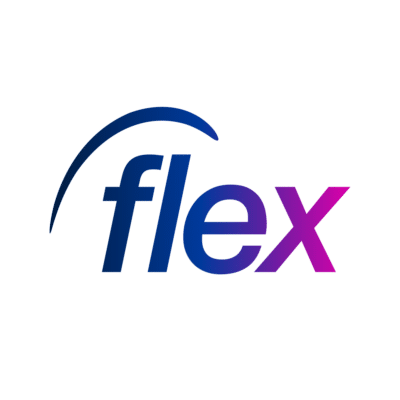
The contingent workforce has shifted from being merely a tactical resource to a key strategy for organizations dealing with talent shortages and economic uncertainties.
Understanding your current contingent workforce program
Comprehensive assessment
Before optimizing your contingent workforce program, it’s vital to understand where you currently stand. Conducting a thorough audit will allow you to identify any gaps, along with opportunities for improvement. Key areas to evaluate include:
- Spend analysis: Track how much is being spent on contingent workers across departments and projects. Identify areas where costs can be reduced without compromising quality.
- Supplier performance evaluation: Assess the effectiveness of your staffing suppliers. Are they delivering the right talent on time? Are they meeting compliance standards?
- Compliance status: Review whether your organization adheres to all local and regional laws, including worker classification and data protection regulations.
Identifying pain points
Many organizations face recurring challenges in managing their contingent workforce. These often include:
- Fragmented management processes: A lack of centralized systems can lead to errors and miscommunication across teams.
- Inconsistent quality: Without proper vetting, the quality of contingent workers may vary significantly.
- Compliance risks: Non-compliance with employment laws or tax regulations can result in fines and reputational damage.
- Increased costs: Poor oversight can lead to overspending on staffing agencies or underutilized talent.
These issues directly impact day-to-day operations and can prevent organizations from reaching their goals.
Benchmark analysis
To identify improvement opportunities, compare your current program against industry standards and best practices. Conducting a benchmark analysis involves:
- Evaluating key metrics: Compare metrics such as time-to-fill, cost-per-hire, and worker retention rates with industry averages.
- Analysing competitor strategies: Understand how similar organizations structure their contingent workforce programs.
- Identifying gaps: Highlight areas where your program underperforms and set measurable improvement goals.
Strategic framework for optimization
Aligning with business objectives
A successful contingent workforce program must align with broader organizational goals. This ensures that your strategy supports growth, innovation, and financial objectives. Key considerations include:
- Growth targets: Ensure that your workforce can scale as your business grows. This might involve partnering with a staffing platform to access pre-verified talent on demand.
- Innovation initiatives: Use contingent workers for specialized projects requiring niche skills.
- Cost management: Streamline processes to reduce unnecessary expenditure while maintaining workforce quality.
Governance structure
Establishing a robust governance framework is critical for managing contingent workforce programs effectively. This includes defining clear roles, responsibilities, and decision-making processes. Components of an effective governance model include:
- Cross-functional teams: Involve HR, Procurement, and Operations to ensure a holistic approach.
- Escalation paths: Clearly define how issues, such as compliance violations or supplier underperformance, will be addressed.
- Regular reviews: Schedule periodic reviews to assess program performance and make necessary adjustments.
Talent integration strategy
Integrating contingent workers into your existing teams requires careful planning to maintain productivity while preserving organizational culture. Best practices include:
- Onboarding processes: Provide contingent workers with the same onboarding experience as permanent employees, including access to tools and resources.
- Collaboration tools: Use technology to facilitate seamless communication between contingent and full-time staff.
- Cultural alignment: Share your organization’s values and expectations to give new workers a sense of belonging.
Technology and tools for program enhancement
Vendor Management Systems
Vendor Management Systems (VMS) play an essential role in the success of contingent workforce programs. These tools centralize workforce management, offering benefits such as:
- Improved visibility: Access real-time data on worker performance, costs, and compliance.
- Enhanced Control: Streamline processes like time tracking, invoicing, and reporting.
- Scalability: Adapt to organizational growth with flexible VMS solutions.
When selecting a VMS, consider factors like integration capabilities, user experience, and scalability. For more best practices, refer to VMS’s ebook on vendor management.
Data analytics and reporting
Data-driven decision-making is essential for managing a successful contingent workforce program. Workforce analytics can help organizations:
- Track performance: Use KPIs to monitor worker productivity and supplier effectiveness.
- Identify trends: Analyze data to predict future staffing needs and market rate changes.
- Drive improvements: Use insights to refine recruitment, onboarding, and retention strategies.
Real-time analytics are particularly valuable for making informed decisions quickly. Learn more about using technology for workforce management in Forbes’ article on key trends.
Integration capabilities
Ensuring seamless integration between your contingent workforce systems and existing HR, procurement, and financial platforms is vital. Steps to achieve this include:
- Mapping current systems: Identify integration points between existing tools and new platforms.
- Testing interoperability: Conduct pilot tests to ensure smooth data flow and functionality.
- Training teams: Provide training to ensure staff can use integrated systems effectively.
By adopting these approaches, organizations can eliminate data silos and ensure smooth-running operations.
Streamline your workforce strategy
Optimize your contingent workforce program with Indeed Flex — a technology-driven platform that connects you with pre-verified talent on demand while reducing costs and enhancing compliance. Request a demo today to see how Indeed Flex transforms workforce management and helps you to reach your business goals.
Subscribe to our newsletter
Stay ahead of employment updates and workforce management tips. Subscribe to our newsletter for expert insights straight to your inbox.








